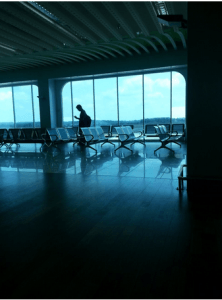The Australian Labor Party’s Senator Kristina Keneally recently sought a debate on Australia’s migrant  intake post-COVID 19, arguing there should be fewer temporary visa holders allowed in Australia.
intake post-COVID 19, arguing there should be fewer temporary visa holders allowed in Australia.
Broad terms can create confusion so we’re taking this opportunity to clarify a few areas of Australia’s temporary visa migration program.
Who are Australia’s temporary visa holders?
Australia’s temporary visa holders include tourists, students, backpackers and sponsored skilled workers. In April 2020, there were 2.17 million registered temporary visa holders. A number of these temporary visa holders, like the 200,000 tourists on visitor visas, don’t have work rights.
Others, like students, backpackers on work holiday visas and seasonal labourers, have work rights with limits on how many hours they can work in a fortnight (in the case of student visa-holders) or the length of time they can work for the same employer (in the case of working holiday visas).
Then there are those on a TSS visas (temporary skilled shortage visa subclass 482), have limits on the scope of work they can carry out. Ie they must be carrying out the occupation for which they were sponsored for.
Temporary migrant workers
The shadow Immigration minister elaborated her argument, suggesting Australia has relied too heavily on temporary migrant workers.
But who do we mean by temporary migrant workers?
Temporary migrant workers include working holiday makers, students and sponsored skilled migrants, like those on Temporary Skills Shortage subclass 482 visas. All of these visa-holders pay tax on the income they earn and spend their earnings in Australia.
Since its inception, Australia’s skilled migration program has been designed to address skills shortages that impede the nation’s productivity. Each sector, from health to agriculture to IT, must have a compelling case for an occupation to be listed on the Skills Occupation list – the list that outlines all the occupations an employer can sponsor an overseas worker for.
Are migrants taking Aussie jobs?
Visa-holders with work rights fill vacancies employers struggle to find an Australian or a permanent resident to fill.
Working holiday makers, for example, have been an important source of labour in regional areas. By performing seasonal work on farms, for instance, working holiday-makers carry out jobs which farmers would otherwise have difficulty filling with Australian workers.
Employers want to fill their vacancies with Australian workers. The decision to sponsor a skilled worker from overseas is not one employers take lightly. Take the temporary skill shortage program that enables employers to nominate a position and sponsor a skilled employee. The process of employer sponsorship is detailed – and few would describe it as quick or easy (which is why many engage a reputable registered migration agent to represent them).
Not only do employers have to meet criteria that allows them to sponsor an employee for a TSS visa (a status in which an employer becomes recognised as a Standard Business Sponsor or SBS – by the department of Home Affairs), they then have to get approval for nominating the job vacancy for sponsorship. This includes carrying out market testing – a process that involves listing the efforts taken over a period of time to fill the vacancy with an Australian or a permanent resident. Another condition employers must undertake is to pay the sponsored employee the same rate they’d pay an Australian, known as the market salary rate.
Underpaying an employee, whether they’re a visa-holder or a citizen, is illegal. When employers make headlines for underpaying employees, its not just temporary work visa holders who have carried the burden. Australian citizens and permanent residents do too.
Last year, two of Australia’s major supermarket chains revealed they had underpaid their staff for years, most of whom were Australian.
When the employer’s nominated position is submitted for approval, the proposed candidate can submit their TSS / 482 visa application. And that’s no shoe in: the candidate has to prove they meet Australian standards for that occupation by holding relevant qualifications and having the required years of professional experience. This is in addition to meeting Australia’s English language, health and character requirements.
The decision of sponsoring an overseas worker, then, is not one employers make lightly nor one that the government grants easily.
Post-COVID 19
Of course, everything is different now. With the onset of the coronavirus, many temporary visa holders have headed home (or are trying to). And it’s unlikely Australia will be receiving many new temporary visa holders, be they tourists or sponsored workers, anytime soon with Australia’s borders closed to non-citizens and permanent residents and the loss of jobs. Indeed the government predicts a 85% contraction in the rate of migration to Australia, as students, visitors and skilled workers stay away.
Will the number of temporary visa holders ever return to pre-pandemic levels? Only time will tell. What we do know, is that a fresh debate about temporary migration to Australia is underway.
Greg Nicolson is Managing Director of the Australian Business Migration Group and an Australian-government registered migration agent.
If you have a question about an Australian visa, email info@abmgroup.com.au.
Sources: Department of Home Affairs. SBS News, Associated Press


 intake post-COVID 19, arguing there should be fewer temporary visa holders allowed in Australia.
intake post-COVID 19, arguing there should be fewer temporary visa holders allowed in Australia.